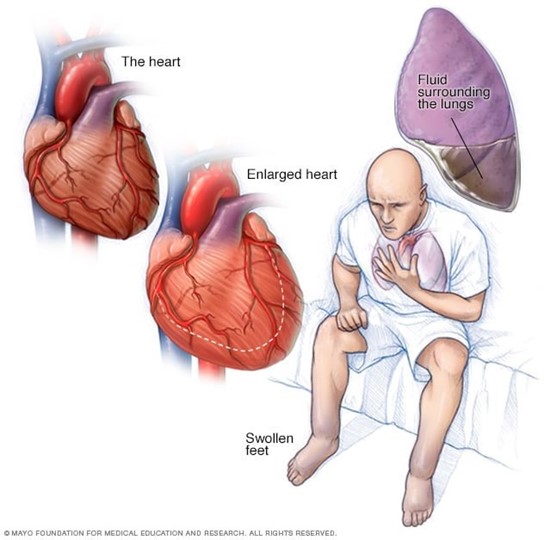A nurse is preparing to administer clonazepam 1.5 mg PO in 3 equally divided doses every 8 hr for a client who has seizures. The amount available is clonazepam 0.5 mg tablets. How many tablets should the nurse administer per dose? (Round the answer to the nearest tenth. Use a leading zero if it applies. Do not use a trailing zero.)
The Correct Answer is ["1"]
To calculate the number of tablets, divide the total dose by the dose per tablet. In this case, the total dose is 1.5 mg / 3 = 0.5 mg and the dose per tablet is 0.5 mg. Therefore,
(number of tablets) = (0.5 mg) / (0.5 mg) = 1 tablet
Round the answer to the nearest tenth and use a leading zero if it applies. Do not use a trailing zero because it could be misread as a decimal point. Therefore, the nurse should administer 1 tablet per dose.
Nursing Test Bank
Naxlex Comprehensive Predictor Exams
Related Questions
Correct Answer is A
Explanation
a.This is appropriate as regular, moderate exercise can help improve cardiovascular health and functional capacity in clients with heart failure. It is essential to discuss appropriate types and levels of exercise based on the individual’s condition.
b.This is incorrect because clients should be instructed to notify the provider if they gain 1 kg (2.2 lbs) in one day or 2 kg (4.4 lbs) in one week. A weight gain of 0.5 kg is not typically a threshold for concern.
c. Take diuretics early in the morning and before bedtime is wrong because it may disrupt the client's sleep patern and cause nocturia. The nurse should advise the client to take diuretics early in the morning and avoid taking them in the evening or at night, unless prescribed otherwise.
d. Take naproxen for generalized discomfort is wrong because naproxen is a nonsteroidal anti-inflammatory drug (NSAID) that can worsen heart failure by causing sodium and water retention, increasing blood pressure, and reducing the effectiveness of diuretics and other heart failure medications. The nurse should advise the client to avoid NSAIDs and use acetaminophen or other alternatives for pain relief, as prescribed by the provider.

Correct Answer is A
Explanation
Phenytoin is an anticonvulsant medication that is used to prevent and treat seizures. It works by stabilizing the electrical activity of the brain and reducing the spread of abnormal impulses. Phenytoin is usually taken for life or until the seizures are controlled by other means, such as surgery or diet. The client should not stop taking phenytoin without consulting their doctor, as this can cause withdrawal symptoms or increase the risk of seizures.
The other options are correct and indicate that the client understands the discharge teaching because:
- "I have made an appointment to see my dentist next week." This statement is correct because phenytoin can cause gingival hyperplasia, which is an overgrowth of gum tissue that can lead to bleeding, infection, or difficulty chewing. The client should practice good oral hygiene and see their dentist regularly to prevent or treat this condition.
- "I will notify my doctor before taking any other medications." This statement is correct because phenytoin can interact with many other medications, such as antibiotics, anticoagulants, oral contraceptives, or antacids. These interactions can affect the blood levels and effectiveness of phenytoin or the other medications, causing adverse effects or reduced seizure control. The client should inform their doctor of any other medications they are taking or planning to take, including over-the-counter, herbal, or dietary supplements.
- "I know that I cannot switch brands of this medication." This statement is correct because different brands of phenytoin may have different formulations or bioavailability, which can affect the absorption and metabolism of the drug. Switching brands can cause changes in the blood levels and effectiveness of phenytoin, leading to toxicity or reduced seizure control. The client should always use the same brand of phenytoin and check with their pharmacist if they notice any changes in the appearance or labeling of their medication.
Whether you are a student looking to ace your exams or a practicing nurse seeking to enhance your expertise , our nursing education contents will empower you with the confidence and competence to make a difference in the lives of patients and become a respected leader in the healthcare field.
Visit Naxlex, invest in your future and unlock endless possibilities with our unparalleled nursing education contents today
Report Wrong Answer on the Current Question
Do you disagree with the answer? If yes, what is your expected answer? Explain.
Kindly be descriptive with the issue you are facing.
